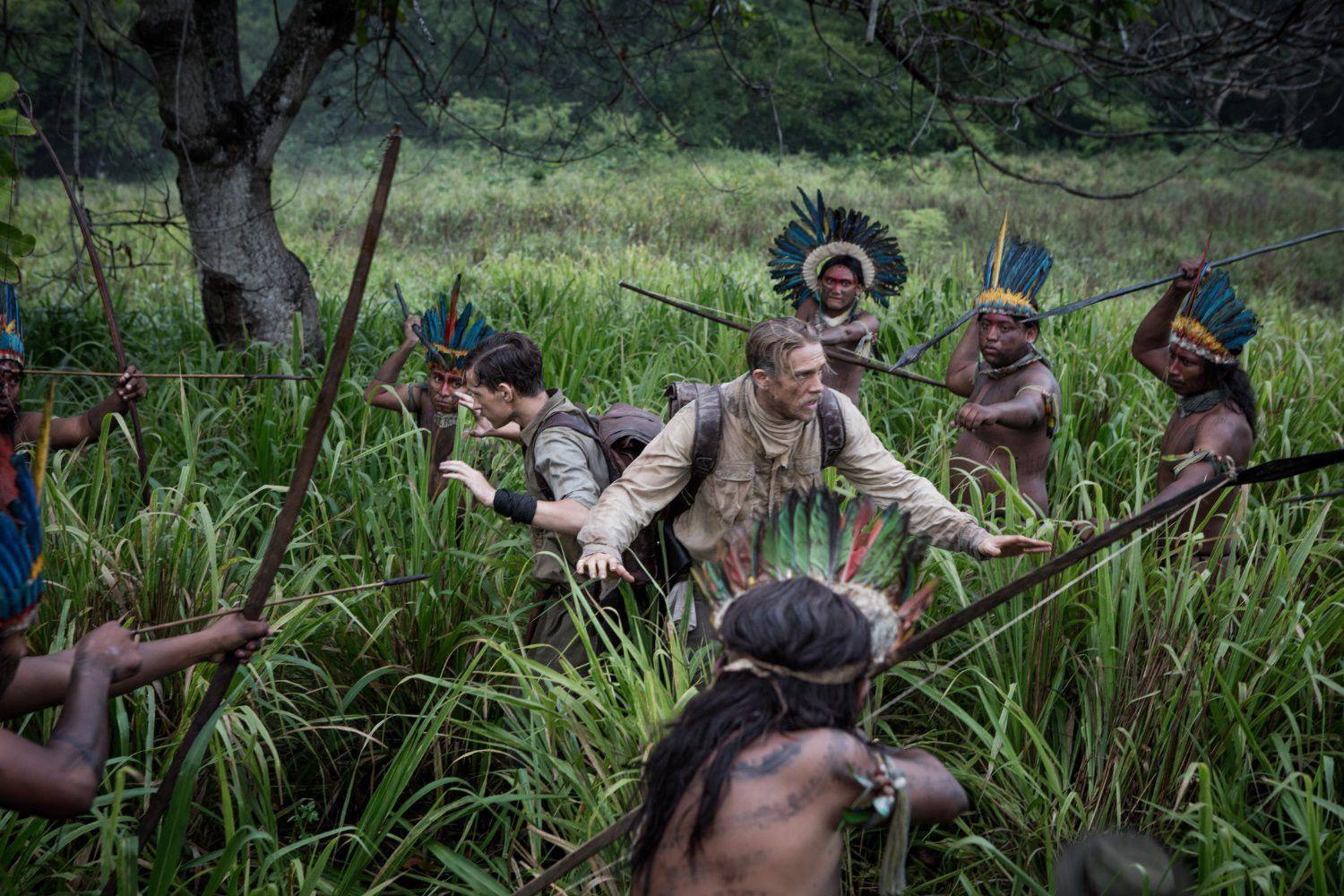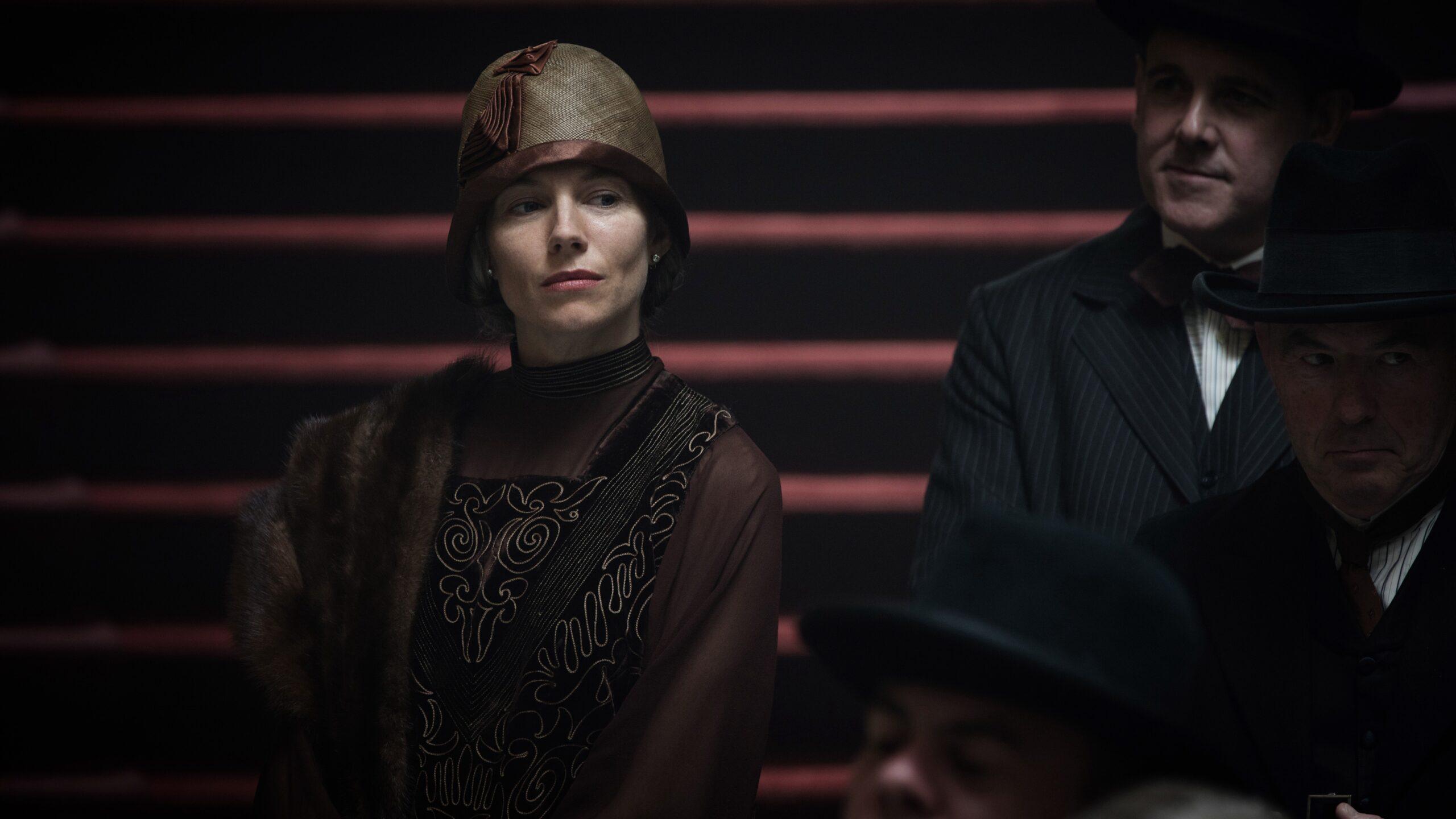In The Lost City of Z, Colonel Percival Fawcett, played by Charlie Hunnam, publicly proposes that the inner depths of the Amazon jungle harbor an ancient civilization. How does he know? He’s seen the proof. He’s discovered artifacts implying the existence of an entire social world, one buried deeper in the jungle — and further back in the colonial past — than any other non-native had, to that point, lived to see. Ancient pottery and cutlery, faces carved into trees — proof, in other words, of civilization. Proof, above all, that Europe wasn’t civilized first.
It’s a dangerous proposition. And part of the story of The Lost City of Z, which is based on the 2009 nonfiction book by David Grann, is the radical means Fawcett uses to prove himself right. The Lost City of Z follows three of Fawcett’s trips into the Amazon between 1906 and 1925. It’s about the personal costs of those missions, to his family and particularly to his wife, as well as the political, cultural, and intellectual gains at stake in each journey. It’s a movie about discovery that’s full of its own spectral, dream-like wonders, a big, old-fashioned, robustly imagined yarn of the kind Hollywood no longer really makes. It is, in other words, a movie by James Gray. He is a director known, among the relatively few but devoted followers of his work, for making old movies in a classical style, richly drawn melodramas full of agony and, above all, grandeur.
Gray’s early films, movies like The Yards and We Own the Night, were moody crime dramas starring the likes of Mark Wahlberg and Joaquin Phoenix. They were tales seemingly filmed on strips of trainyard grit and shadow, stories about white ethnic families from the outer boroughs, a milieu Gray is known for. Later, in films like Two Lovers and The Immigrant, Gray expanded beyond family crime sagas toward, in the former, a darkly hopeful contemporary romance, and in the latter, an immigration tale from the early 20th century. Throughout, Gray has maintained an uncanny ability to evoke a time and place, and entire familial histories, in the space of a scene. Hence the peculiar sensations evoked by a movie like The Lost City of Z, which, despite being set as far from the Jewish enclaves of Brooklyn as possible, nonetheless speaks above all to the director’s ability to make every environment, however monolithic or miniature, feel like home.
Gray’s last movie, The Immigrant, starred Phoenix and Marion Cotillard, but it suffered a botched release in 2014 (thanks, Gray recently dished, to Harvey Weinstein). It’s been streaming on Netflix continually since, but still hardly anyone has seen it. It’s with a sense of justice, then, that The Lost City of Z is getting the theatrical release it deserves. And to see Gray expanding the canvas of his movies, despite their relative non-success, is heartening. (Z is being released by Amazon Studios, which has a knack for working with directors with difficult histories, as suggested by its collaborations with the likes of Kenneth Lonergan and Spike Lee.)
Z — technically pronounced Zed, but I won’t be that guy — is somehow both the most James Gray movie Gray could have made, and the least. As a movie concerned with the interpersonal push and pull of familial responsibility and personal liberty, it is the consummate Gray tale. But Z is also evidence of Gray breaking new ground: it wanders as far afield, geographically and spiritually, as it can, becoming a movie about outer discoveries and not only inner ones. It’s possibly the start of a new trend for Gray. Just this week, it was announced that his next movie, Ad Astra, will be set in space — and star Brad Pitt.
I suspect Ad Astra will be no less gratifyingly personal than his other movies. It’ll likely make me want to go to outer space, the way The Lost City of Z has me fiending to go join Fawcett in the jungle — from which, in real life, he has yet to return, by the way. Space and the jungle are, for the record, places I’d actually rather not go, thanks to seeing how awful they are in movies. But Gray has a way of convincing me. I watch Gray’s films for the dirty, evocative grit of his city streets, the melodramatic leaps of his characters, and the gold-hued intimacy and wonder of his images. Most of all, though, I watch because they fill me with feeling.


There are worlds of power from which Fawcett feels sealed off. He has rank, but no medals, and he’s a bit broken up about it. His father was a legendary army officer; he’s someone substantially less. "I was rather hoping for a position where I might see a fair bit of action," he says when he’s offered a surveying job. On paper, it’s a seemingly low-stakes survey mission, sponsored by the Royal Geographical Society, meant to map uncharted terrain in Bolivia. Not exactly what Fawcett, who’s done this kind of survey work before, has in mind for "action." But the idea of surveying unseen terrain does have some appeal. What might he find out there, in the unknown?
Perhaps it’s more a matter of what he’ll find when he gets back. "My reputation as a man rests entirely on our success," he says to his aide de camp, Henry Costin (an unrecognizable Robert Pattinson). He’s not exaggerating. After his first, formative trip into the Amazon, he arrives back home and is received at a banquet thrown in his honor. "Welcome to the inner circle," a higher-up says, and worlds that had been closed off to him before are immediately opened to him.
That makes it seem like The Lost City of Z is primarily a story about one man’s glory. But watching it makes you realize that what’s at stake, for Gray and for Fawcett, is the experience. Experience is a little hard to quantify, however, and even Fawcett is a skeptical adventurer at first. The jungle that emerges in Gray’s movie is full of mystery, though Fawcett initially doesn’t believe his native guide, who spins a tale of a great civilization unseen by outsiders’ eyes. "You will see," the guide says, "many people lived here once, in a city of gold and maize. White men never discovered it." Fawcett initially thinks the native is going mad — worse yet, that it’s a distant fantasy generated by an infantile culture.
And then he and his crew see it for themselves: those holy faces carved into the tree bark, that collection of ancient pottery. "When you said no one had been here before," Fawcett says, "you meant no white man."
Every moment of discovery in The Lost City of Z is a fit of aesthetic rapture, punctuated by a crashing wave or a panther’s sudden roar. The movie overwhelms the senses. Gray’s painterly images are patiently detailed and rendered, as if they’re being painted live, in the moment. Yet, for those pleasures, discovery is of course a vexed concept. It’s necessarily a movie about white colonialism, but it’s also knowingly so. At one point on the expedition, a snake glides by and Costin says, "We may be a little too English for this jungle."
Rather than making this subtext, Gray, who wrote the script himself, makes it text. "What — savages in Westminster Abbey?" asks one of Fawcett’s colleagues as he presents his findings to the Royal Geographical Society. "Are you insisting on mythical kingdoms of gold?" It’s one of the best scenes in the movie, full of raucous verbal jousting in the spirit of civilized debate. Fawcett is arguing for the existence of a society that predates British society. The response? "It is one thing to defend primitive men — it is another thing to elevate their capacity beyond reason."
It’s the kind of social attitude that stings — and Gray makes the most of it. The movie is full of acting revelations: Hunnam, upcoming Spider-Man: Homecoming star Tom Holland, and Pattinson, especially. The secret MVP of the cast, however, is Sienna Miller, who, as Fawcett’s wife Nina, gives a gorgeous, fiery performance that sums up the film’s themes and heart-wrenching contradictions. We learn early on that Nina is a modern woman: as Fawcett jokes, she’d wear the trousers if she could. "He’ll not know you when you return," she says to her husband, regarding their son, before Fawcett leaves on his first trip to the Amazon. By the end of the film she’ll have had three children, all of them raised more or less offscreen as Fawcett ventures into the jungle. "Don’t be sad," she says at one point. "I’m an independent woman." "I know this is a sacrifice for all of us," replies Fawcett. It is — and the movie doesn’t forget it.

All roads in the movie point toward the cruelty of European modernity: the harsh attitudes toward natives, the utter terror of war, and perhaps above all, the disempowerment of women. At the Royal Geographical Society, hearing Fawcett speak of his initial findings after his first trip, Nina has to sit in the balcony. She should be onstage with her husband — she, who found a conquistador’s letter confirming his research and whose efforts in the library archives only make his findings in the jungle more valuable. But the Royal Geographical Society is "no place for a woman." And in one scene, punctuated by a few well-timed, extraordinarily performed reaction shots of Miller, Gray and his cast summarize some of the key principles of movie: all the raw prejudices of European society — against women, natives, and others — and all the intellectual and cultural battles it takes to subvert them. It’s all there in Fawcett’s speech, which sets these scientists’ world ablaze with discoveries they cannot imagine — and in the beaming face of Nina, who can imagine, but who cannot venture out on her own journey of discovery.
Nina Fawcett is an adventurer confined to reading about those adventures in letters. She is, for me, the heart of The Lost City of Z, proof that even as it bends toward a wistful sense of discovery, the movie is purposely tinged with the bittersweet reality of civilized society’s fraught inequity. That’s part of what makes the movie’s final 30 minutes a masterpiece in their own right, as Fawcett sets out on his third and final journey in the film with his oldest son as Nina and his two younger children once again stay behind. Gray gives a stunning suggestion of all that Fawcett is leaving behind, with us flying through the rooms of his home — his sleeping wife, his young children — as if they were idle train platforms and Fawcett and his son were swiftly passing them by.
It’s as if the movie itself were taking flight before our eyes. As a cinematic moment, it’s a sly, persuasive reference to Federico Fellini’s I Vitelloni. More immediately, it’s an evocation of all that’s at stake in Gray’s own film. What Fawcett seeks in the jungle is something grander than glory but also less perceptible. He’s looking for the sublime, and he’s willing to risk unmooring himself from the permanent fixtures of his life, such as his family, to get there. We never entirely know if he finds what he’s looking for. But in the spirit of Gray’s film, we, in the audience, are able to find it in our own way.